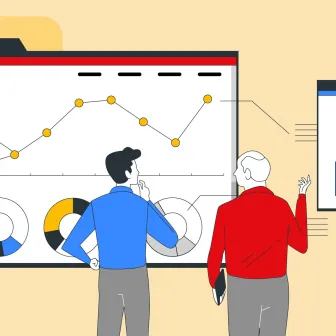Customer touchpoints are ballooning and making data collection more fragmented. The risk of a garbled customer view is increasing too. With a lack of joined-up data solution, organisations find it difficult to offer personalised interactions to the consumers. With such a huge focus being put on enhancing the customer experience, businesses have been looking for a way to store, organise and get insights from that data. Rightfully so, companies are starting to recognise the value of customer data platforms (CDPs).

Customer data platform, according to Oracle, is a “packaged software for marketers that collects and unifies data in a consistent database, linking information from multiple sources to build a single, unified view of each customer.” The CDP Institute, a vendor-neutral directory of CDPs, reports that the number of CDP vendors increased from 23 to 96 from December 2016 to June 2019. This made Gartner recognise CDP among the emerging trends that will transform how marketers run their technology ecosystems. Surely, CDPs are rapidly becoming the technology of choice for more and more marketers who are looking to rationalise and consolidate their customer data to power more personalised campaigns.
The number of possible vendors might make the decision-making process overwhelming. It’s important to look for some important elements while buying a CDP:
Marketing factors
Several business and marketing considerations are needed to be taken into consideration while looking for a CDP:
- You need to check if it has a marketer-friendly UI which can be used by your team out-of-the-box without any technical expertise.
- The provision for unified profiles of your users and the different ways to view those profiles needs to be checked.
- See whether or not the CDP you are looking for can support real-time data streaming and batch processing to keep all your channels operating with up-to-date customer data.
- The integration compatibility should also be checked which allows you to understand if it can integrate seamlessly with all your preferred MarTech tools and channels.
- The CDP’s ability to offer predictive scoring and machine learning for personalisation and audience segmentation is another important consideration.
- Most importantly, you need to know whether or not the CDP vendor would provide self-service and dedicated customer support. Plus, check if they offer strategic services to help you succeed with the technology.
- The CDP should also be helping with GDPR and CCPA compliance.
Technical factors
In addition to the process of evaluating a CDP of the basis of how best it fits your business and marketing goals, the technical side of it should also be considered:
- You need to check if the CDP would fit your technical requirements.
- Verify if the technical implementation will be simple or complex. For instance, find out if the company is offering you a JavaScript tag for your website for capturing the data easily and importing it into the CDP.
- You should check if the CDP has APIs and developer SDKs that can be utilised by your developers to integrate with other tools. Not only you need to know if gives you easy integration with your preferred tools but also whether or not if it will continue to do so.
- The system’s handling of identity resolution can be of great use and should be verified beforehand. This helps identify users across different channels.
- For privacy concerns, check whether or not the system function deterministically or probabilistically as the deterministic providers are more likely to be in compliance with privacy regulations.
- Check if the CDP is hosted on a secure, cloud-based service.
- Making sure that CDP has credible, independent security certification like ISP 27001 or SOC 1 is also important as these certifications tell you that it is constantly monitoring and upgrading its security practices.
- Verify if the CDP solution could accept both structured and unstructured data from multiple sources or tools.
- You should know if it provides automatic data export into your marketing tools.
Stakeholders into the mix
Once you have the marketing and technical considerations sorted out, you need to bring internal stakeholders into the process. This is because the CDP you choose will be working with data from different departments within your organisation. For instance, your sales team’s CRM (Customer Relationship Management) may be storing data that your CDP will need access to. Or, your customer success team may be using tools that handle customer data. So, gathering inputs from different teams would help in the buying process.
Vendor comparison
With a slew of vendors thronging the market, you have plenty of options to choose from. You can start by considering your industry. If you are a large enterprise, opt for a CDP that has a proven track record of working with the big companies. Or, if you are a small business, ensure that the CDP you are zeroing on is having enough experience in that space. There’s an obvious chance of overlap with CDPs that have an experience of working with small to large companies, but that’s okay. Plus, the marketing and technical factors that we talked about would also help you to figure out the best CDP for your business.
Measuring success
The Return On Investment (ROI) of CDPs, you are intending to buy, is one thing that has to be given a lot of emphasis upon. If you select a CDP that doesn’t save your engineering team’s time, it may not be worth investing in.
Focus both on quick wins and long-term goals. Quick wins build momentum. But, it’s the long-term success that matters the most. As you build campaigns, clean your data, align your teams and understand the system you have chosen, the long-term benefits of a CDP will eventually gain momentum.
Conclusion
The growth and evolution of CDPs is an acknowledgement that data quality, governance, privacy and integration are pivotal to the customer experience today. As the market keeps on marching ahead, we will continue to witness businesses of all sizes turning to CDPs as the benchmark for their customer relationships.
Building a unified customer database is a strategic and, most often than not, a challenging project. The best way to do this is to take small steps by first defining your goals i.e. the marketing programs you want to run. And then, you can go on to exploring the systems and capabilities you need to meet them. This makes sure that you build requirements on the basis of real business needs and deliver a system with real business value.
It’s important to take your time and work through the details. For more help on choosing and implementing a CDP in your business, ping us at [email protected].
Subscribe
Related Blogs
Ecommerce And Data Analytics: Increase Your Sales

Are you seeking to achieve a greater return on investment while gaining a deeper understanding of ecommerce and data…
Customer Data Platform - A Complete Guide

It is often said that a customer is king. Have you ever wondered why? A customer, consumer, client or end user, whatever…

"Constant data breaches and scandals have brought new attention to Customer Data Platform (CDP) with the business Martech…




